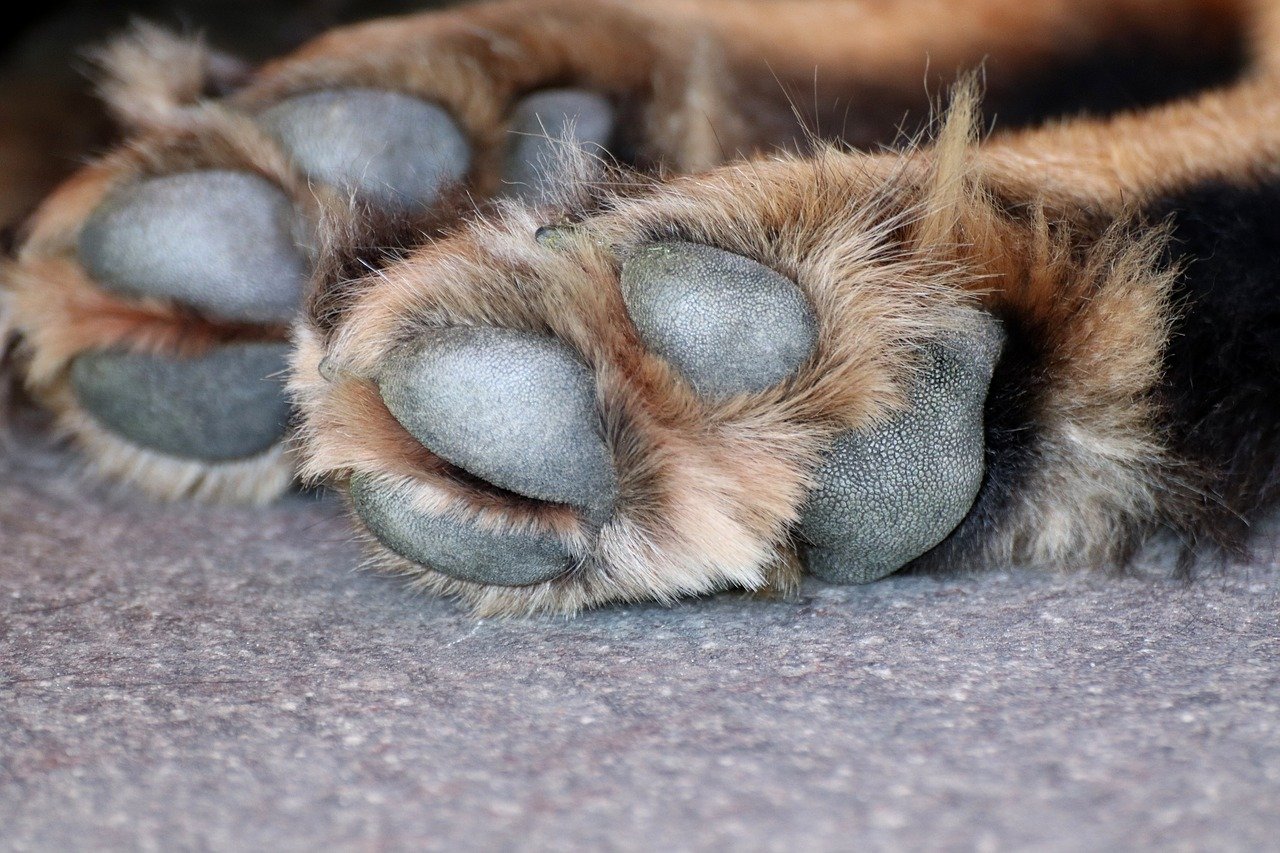Yes, dogs can walk on gravel. It is not harmful to their paws or pads, but it can be uncomfortable. Dogs typically do not like the feel of gravel on their feet and may try to avoid it if they can.
If you’ve ever taken your dog for a walk on a gravel road, you know that it can be tough on their paws. The stones can cut and scratch their skin, and the constant walking can cause irritation. So, what’s the best way to protect your dog’s feet when they’re out on a gravel walk?
There are a few things you can do to make sure your dog’s feet are well-protected. First, invest in some good quality paw pads. These will help cushion your dog’s feet and protect them from the sharp stones.
You can also put booties on your dog’s feet if you’re worried about them getting hurt.
Another good tip is to carry a first aid kit with you when you take your dog for walks on gravel roads. This way, if they do get injured, you’ll be able to treat them right away.
Finally, make sure you keep an eye on your dog while they’re walking and stop frequently to check their feet for any cuts or scrapes.
With just a little bit of extra care, you can make sure your dog stays safe and comfortable while walking on gravel roads!
Pea Gravel
Pea gravel is a type of small, round stone that is often used in landscaping and gardening. It is typically about the size of a pea, hence its name. Pea gravel can be used for a variety of purposes, such as creating walkways, filling in empty spaces, or adding drainage to an area.
Pea gravel is also relatively inexpensive and easy to install, making it a popular choice for many homeowners.
Do Dogs Like to Walk on Rocks
Dogs enjoy walking on rocks for many reasons. The texture of the rocks provides a massage for their paws, and the uneven surface helps to strengthen their leg muscles. Additionally, the scent of the rocks can provide mental stimulation for dogs as they take in all of the new smells.
Walking on rocks also provides a great opportunity for socialization as dogs can meet other dogs while out on a hike or walk.
Dog-Friendly Gravel
One of the great things about having a dog is that they can go just about anywhere with you. This includes on hikes and walks through nature trails. However, sometimes these trails can be difficult for dogs to maneuver because of the terrain.
That’s why dog-friendly gravel exists!
Dog-friendly gravel is a type of gravel that has been designed specifically for dogs. It is usually made from softer materials like sand or pea gravel, which make it easier on your dog’s paws.
This type of gravel can also be found in various colors so that it will match your home’s landscaping.
There are many benefits to using dog-friendly gravel in your yard. For one, it can help to protect your dog’s paws from hot pavement or sharp rocks.
It can also provide them with traction on slippery surfaces. And, since it is typically softer than regular gravel, it will be more comfortable for them to walk on.
If you are looking for a way to make your yard moredog-friendly, consider using dog-friendly gravel!
Your pup will thank you for it!
Pea Gravel for Dogs
If you have a dog, you know that they can be rambunctious and playful, sometimes to the point of destruction. Your backyard may not be able to withstand their excited playing if it’s not properly prepared. Pea gravel is one way to create a durable surface for your dog to play on while also keeping your yard looking neat and tidy.
Here are some things to consider before using pea gravel in your yard:
The size of the pea gravel is important – too small and it could get lodged in your dog’s paw pads; too large and it won’t provide a soft enough surface for comfortable playing. A good rule of thumb is to use gravel that is about the size of a dime or smaller.
Pea gravel comes in many colors, but avoid using brightly colored gravel as it may tempt your dog to chew on it. Instead, choose a natural color like tan or gray.
You’ll need to spread a layer of pea gravel several inches deep in order for it to be effective.
Be sure to compact the gravel so that it doesn’t shift when your dog runs over it.
Once you have the pea gravel in place, you can add other features to make your backyard more fun and enjoyable for both you and your pup! Add some toys or an agility course for extra fun (and exercise).
Best Gravel for Dogs
Gravel is a great material for dog runs because it provides good drainage and doesn’t get muddy. It’s also relatively inexpensive and easy to install. However, not all gravel is created equal.
Some types of gravel can be harmful to dogs if they ingest it, so it’s important to choose the right type of gravel for your dog run. Here are some things to keep in mind when choosing the best gravel for dogs:
The size of the gravel is important.
Smaller pieces can easily be ingested by dogs, so you’ll want to choose a gravel that is large enough that your dog can’t pick it up and eat it. Pebble or river rock are good choices.
The color of the gravel is also important.
Lighter colors will reflect heat better, keeping your dog cooler on hot days.
Finally, you’ll want to make sure the gravel you choose doesn’t have any sharp edges that could hurt your dog’s feet or legs.

Credit: petshoper.com
Is It Good for Dogs to Walk on Gravel?
There are many benefits to walking your dog on gravel. For one, it is a softer surface than concrete, so it is easier on your dog’s feet and joints. Additionally, gravel can provide traction for your dog if they are slipping or sliding on other surfaces.
Finally, gravel is less likely to harbor bacteria and other germs than other types of surfaces like grass or dirt. However, there are a few things to keep in mind when walking your dog on gravel. First, make sure that the stones are not too big or sharp that they could hurt your dog’s feet.
Second, be aware that some dogs may eat the gravel, which can cause digestive issues. If you are concerned about these risks, talk to your veterinarian before letting your dog walk on gravel.
What Gravel is Safe for Dogs?
When it comes to picking out gravel for your dog’s enclosure, there are a few things you’ll want to keep in mind. First, you’ll want to make sure that the gravel is small enough that your dog won’t be able to eat it. Second, you’ll want to choose a type of gravel that won’t break down over time and turn into dust or mud, as this can be harmful for your dog to ingest.
Finally, you’ll want to avoid any gravel with sharp edges, as this could injure your dog’s feet or digestive tract.
There are a few types of gravel that fit these criteria and are safe for dogs. One option is pea gravel, which is typically around ¼ inch in size and made of smooth rounded stones.
Another option is river rock, which comes in a variety of sizes but is generally larger than pea gravel. River rock can also have some sharp edges, so be sure to choose pieces that are smooth and rounded. Lastly, crushed granite is another safe option for dogs; it has a similar texture to pea gravel but is slightly larger in size.
Whichever type of gravel you choose, make sure to wash it thoroughly before using it in your dog’s enclosure. This will remove any dirt or debris that could harm your pup if ingested.
How Do I Protect My Dogs Paws from Gravel?
If you’re worried about your dog’s paws and gravel, there are a few things you can do to help protect them. First, make sure that your dog’s nails are trimmed short. This will help prevent any sharp edges from catching on the gravel and causing injury.
You may also want to consider using booties or socks with traction control to help keep your dog’s feet safe. Finally, be sure to clean your dog’s feet after walks and inspect them regularly for any cuts or abrasions.
Does Running on Gravel Hurt Dogs Paws?
No, running on gravel does not hurt dogs paws. In fact, many dog owners believe that it is actually good for their dog’s paw health as it helps to exfoliate the skin and keep the pads from getting too dry.
Does Gravel Hurt Dogs Paws?
Conclusion
Dogs can walk on gravel, but it is not the best surface for them. It can be uncomfortable and even painful for their paws. If you must take your dog on a gravel path, try to find one that is well-maintained and not too rough.
You may also want to consider using paw protectors to help keep your dog’s feet safe.
